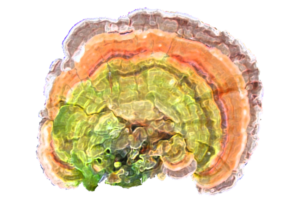Wachtel-Galor S, Tomlinson B, Benzie IF
Abstract
Lingzhi (Ganoderma lucidum) is a woody mushroom highly regarded in traditional medicine and is widely consumed in the belief that it promotes health and longevity, lowers the risk of cancer and heart disease and boosts the immune system. However, objective scientific validation of the putative health benefits of Lingzhi in human subjects is lacking, and issues of possible toxicity must be addressed. The present double-blinded, placebo-controlled, cross-over intervention study investigated the effects of 4 weeks Lingzhi supplementation on a range of biomarkers for antioxidant status, CHD risk, DNA damage, immune status, and inflammation, as well as markers of liver and renal toxicity. It was performed as a follow-up to a study that showed that antioxidant power in plasma increased after Lingzhi ingestion, and that 10 d supplementation was associated with a trend towards an improved CHD biomarker profile. In the present study, fasting blood and urine from healthy, consenting adults (n 18; aged 22-52 years) was collected before and after 4 weeks supplementation with a commercially available encapsulated Lingzhi preparation (1.44 g Lingzhi/d; equivalent to 13.2 g fresh mushroom/d) or placebo. No significant change in any of the variables was found, although a slight trend toward lower lipids was again seen, and antioxidant capacity in urine increased. The results showed no evidence of liver, renal or DNA toxicity with Lingzhi intake, and this is reassuring. The present study of the effects in healthy, well-nourished subjects provides useful, new scientific data that will support controlled intervention trials using at-risk subjects in order to assess the therapeutic effect of Lingzhi in the promotion of healthy ageing.
Reference:
Br J Nutr. 2004 Feb;91(2):263-9

